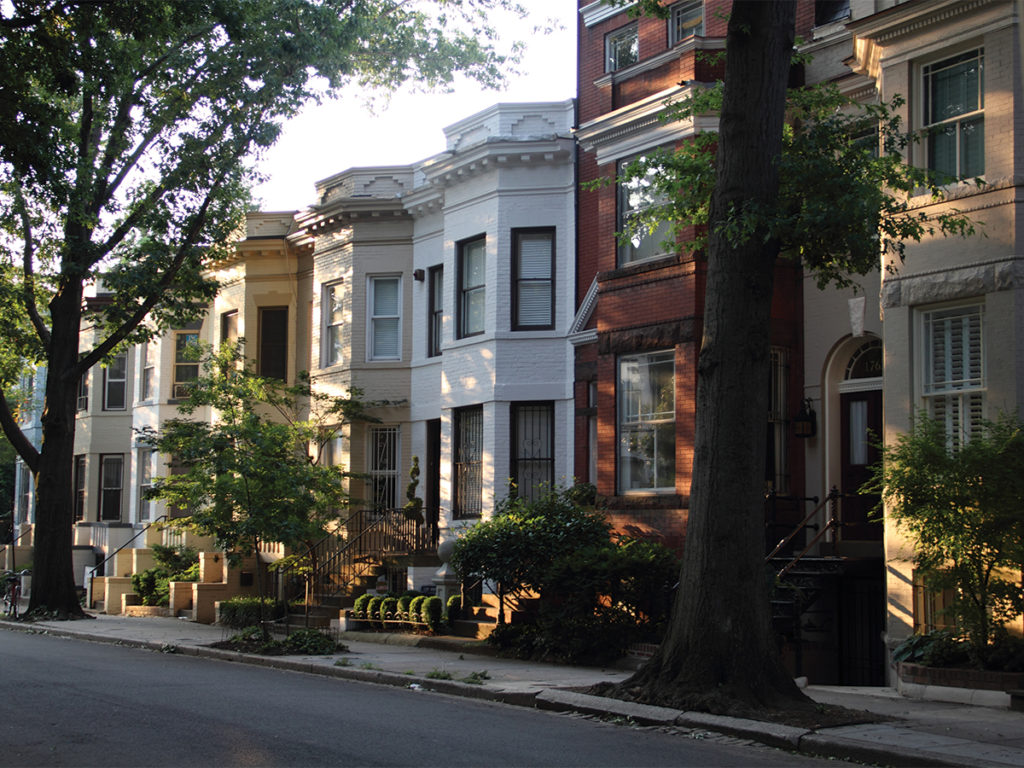
In the pursuit of renewable energy, a conflict has arisen in the residential neighborhoods of Washington, D.C. between residents looking to install solar panels on their houses and architects who want to preserve historical architecture. To be fair, both sides have their points: residents posit that the renewable energy solar panels provide would be invaluable, and architects point to the neoclassical style of architecture for which the district is known, arguing that the installation of the panels would ruin the aesthetic.
This dispute weighs sustainability versus an architecturally significant style, but these ideas are not irreconcilable, especially not in D.C. Sustainable architecture is already a fixture of the district; rather, D.C. needs a more efficient system for both historical preservation and renewable energy.
It is not surprising that such a conflict exists in D.C. After all, the D.C. is a storied city, with a wealth of unique design choices that give the area a simultaneous blend of antique and modern attributes. While they are beautiful, these design choices are difficult to improve. Installing solar panels on a mansard roof, for instance, would be difficult, as only the flatter, higher parts of the roof are capable of bearing the panels. Even then, those installing the panels would have to be especially cognizant of how much weight that portion of the roof is able to carry, given the low amount of available surface area. This design becomes a greater problem when considering the renewable energy goal that D.C. has set for itself: 100% renewable electricity by 2032, with about 60% coming from solar energy.
On that note, D.C. has been doing well in their sustainability efforts on a large scale. Their 2020 plan for historic preservation is comprehensive and includes several objectives for sustainable architecture and improvement. The more troublesome aspects lie in the inefficiency of the process. Under the current system, the Historic Preservation Review Board (HPRB), as well as two other panels, must give approval for solar panel installation. In 2009, a couple applied for solar panel installation; the HPRB deadlocked the case and rejected the plans. After four years and extensive revision, the couple was able to install solar panels that amounted to less than half the power initially proposed.
By comparison, starting this year, the state of California mandates that solar panels must be installed on new houses, with a few options available for installation and payment. This model has received overwhelming support, and because it is the first of its kind to mandate solar panel installation, it may be seen as a solid alternative to the model D.C. is currently under. Implementation of this kind of plan in D.C. could result in the district reaching the sustainability goal more quickly and more efficiently, while ensuring the district’s historical buildings would be capable of handling a mass infrastructure change more effectively.
Moreover, as previously stated, D.C. is doing quite well with regards to its other sustainability efforts. It is currently home to the U.S. Green Building Council, which frequently lists D.C. as a leader in energy and environmental design. The sustainability design in D.C. is such that it is the only Leadership in Energy and Environmental Design (LEED) platinum-certified city in the world. Of course, these distinctions only serve to make the conflict between historical preservation and sustainability more glaring. The district needs to set in place a system that prioritizes its sustainability goals and allows historical buildings to be similarly modernized without having to go through three panels of approval.
This efficiency and balance is most effective under California’s system. Washington, D.C. is already a bastion of sustainability, but it could be even stronger if new houses in D.C. were automatically outfitted with solar panels. Furthermore, D.C. would have the potential to reach greater sustainable heights if those panels were no longer subject to the whims of three different boards that need to approve of these. Historical buildings are remnants of the past; in these changing times, these buildings should be allowed to remain, but it is important to recognize that they were constructed during a long bygone time period. D.C. must now move forward to the future, and its new architectural policies should reflect that principle.








